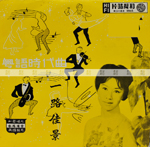In the time when Wong Jum-sum grew up, Cantonese pop music was but one of many kinds of music broadcast on radio. In a society where over 80% of the population spoke Cantonese, that came as a major surprise. Wong has a simple explanation for this. Cantonese pop grew out of traditional Cantonese music, but it could not build on the popularity of the latter in the face of severe competition. Compared to Western or Mandarin pop, it lagged behind in the areas of composition, lyrics, singing, accompaniment, recording, distribution, and marketing. Its competitors had a head start in talents, organization, and technology that took Cantonese pop more than a decade to come close.
Not everyone agrees with Wong’s diagnosis. Other scholars argue Canto pop, even in such early days, had a unique vibrancy that came from a healthy disregard of the boundaries among different traditions and genres, be they local or foreign. Early Canto pop laid a solid foundation for modern Canto pop, which went on to dominate not only Hong Kong but most Chinese communities around the world.
The story of Cantonese pop awaits careful re-writing.


作曲:王粵生
作詞:王粵生
主唱:芳艷芬
馬來亞春色綠野景緻艷雅
椰樹影襯住那海角如畫
花蔭徑風送葉聲夕陽斜掛
你看看那鮮艷女雙雙花蔭下
馬來亞春色綠野景緻艷雅
瞭眼底那綠柳花裡斷掛
芬芳吐花與樹香美艷如畫
我最愛那春日裡鮮花幻化
情侶們互吐情話於椰樹下
若兩情深深相印
睹春光芳心更愛他
馬來亞春色綠野景緻艷雅
椰樹影襯住那海角如畫
春風送一片綠香野外林掛
春風鮮花心內覺舒暢樂也
若午夜互訴情話於椰樹下
情侶在芭蕉曲徑
一雙雙相偎怕看他
馬來亞春色綠野景緻艷雅
椰樹影襯住那海角如畫
心輕快只見艷花萬綠叢掛
春風吹花心內覺舒暢樂也
























